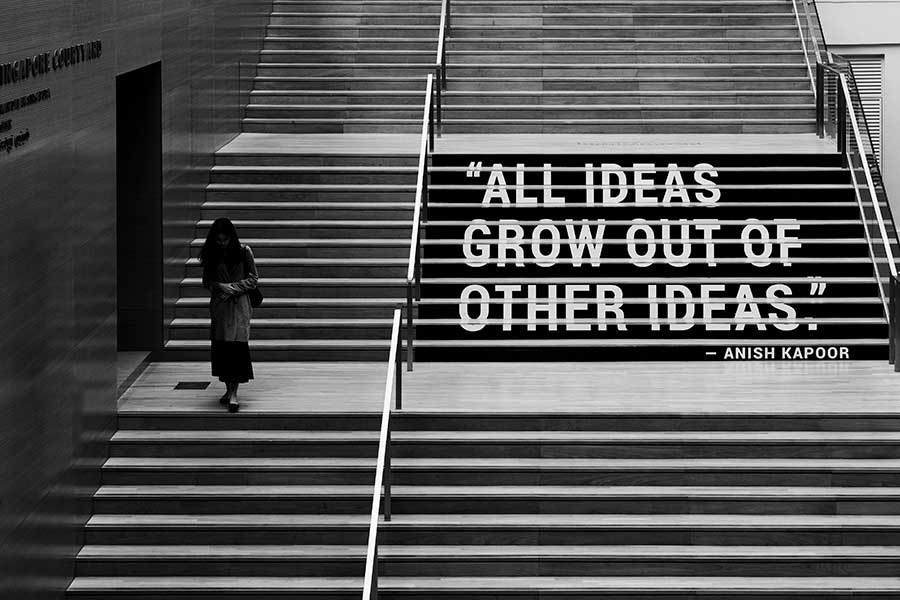

The concept of disruptive communication may initially seem intimidating, but as a small business owner, it can be an incredibly useful tool for growth, visibility and creating a strong bond with your customers.
In simple terms, disruptive communication involves breaking away from traditional, established communication patterns in order to stand out and create a significant impact. It deviates from the common practice and instead uses unconventional, innovative ways to get messages across, catching the audience’s attention and making your brand memorable.
For instance, let’s consider a small bakery that has just introduced gluten-free offerings. Traditional communication might involve displaying a sign or sending out an email to existing customers. However, disruptive communication could involve creating an engaging social media campaign using striking visuals and narratives, detailing the journey of sourcing gluten-free ingredients and the process of creating these new offerings. This could quickly garner interest, attract a new customer base and create buzz around the brand.
As a small business, it is crucial to stay ahead of your competition and make a significant impact within your market. Disruptive communication allows you to do so effectively, enhancing your brand’s value and reaching out to a broader audience.
Adopting such an unconventional approach garners more interest and attention. This, in turn, can lead to increased brand recognition and potential customer engagement. More importantly, it offers the opportunity to express your brand’s unique values and selling propositions in a creative, exciting way that resonates with your customers.
For example, hosting a live webinar or panel discussion with dietary experts discussing the benefits of gluten-free consumption could be a fantastic disruptive communication strategy for our earlier mentioned bakery. This not only promotes their new products but also provides valuable information to customers, positioning the brand as a thought leader in its field.
In order to implement disruptive communication successfully, it is crucial to understand your target audience and their preferences. Innovation in communication should not sacrifice the clarity of the message. Your customers need to understand what you’re saying and how it’s relevant to them.
Start small by experimenting with different mediums and messages. Monitor the response, and gradually scale up efforts based on what resonates best with your audience.
Remember the key to successful disruptive communication is not just about being different; it’s about being uniquely relevant and providing value to your audience in a way that your competitors aren’t. Be bold, be creative, and don’t be afraid to push the boundaries in order to make your small business stand out.
In the fast-paced world of contemporary business, disruptive communication plays an essential role in driving growth, particularly for small businesses and brands. Disruptive communication hreaks conventional norms, presenting innovative ways to communicate with customers, stakeholders, and employees.
A significant advantage of disruptive communication in business is reshaping how you connect with your customers. Traditional marketing and customer service strategies can be predictable and, hence, overlooked by consumers. By contrast, employing strategic disruptive communication methods can grab the attention of the consumer and make you stand out from your competitors. For instance, Innocent Drinks, a British company, is renowned for its unconventional marketing approach. From humorous product descriptions to engaging social media posts, Innocent’s disruptive communication not only captures the attention of the audience but also humanizes the brand.
Equally advantageous, disruptive communication can stimulate staff engagement. The standard top-down approach may not always resonate with employees nor encourage two-way communication. Implementing disruptive communication strategies such as peer recognition platforms or open forums for idea exchanges can empower your workforce, fostering a culture of openness, which is fundamental for innovation and growth. A UK-based company, Timpson, is known for its ‘upside-down management’ style, which allows shop floor colleagues to make decisions traditionally reserved for management. This disruptive communication strategy has resulted in increased employee satisfaction and improved business performance.
Furthermore, disruptive communication can also change how small businesses engage with stakeholders. Instead of relying on standardised reports or formal meetings, consider interactive presentations, webinars or even virtual reality tours of your business operations. Such strategies offer stakeholders unusual insight into your business and evidence of your commitment to transparency and improvisation. Warby Parker, a US eyeglasses company, used this method to raise funds from online stakeholders. They provided a virtual reality tour of their website testing labs, resulting in impressive capital input.
While disruptive communication may require overcoming traditional comfort zones, when executed effectively, it can offer small businesses a competitive edge and stimulate continued growth.
Innocent Drinks, a British smoothie company, is a prime example of a small business utilising disruptive communication strategies to great effect. Rather than conforming to conventional advertising norms, they employed a unique, conversational style in their packaging and marketing campaigns. This approach resonated with consumers seeking authenticity and connection, leading to increased brand visibility and sales.
The conversational tone on their product labels helped Innocent Drinks exude an approachable and friendly vibe, standing out from competitors in a traditionally formal industry. For small businesses, this is a powerful lesson in not just selling a product or service, but cultivating a personality that your target audience can relate to.
BrewDog, another UK-based company, is often celebrated for its innovative disruption within the craft beer industry. When launching their flagship beer, Punk IPA, they veered away from traditional methods of advertising and instead relied on a bold, in-your-face communication style that mirrored the rebellious spirit of the brand.
Despite limited marketing budget, BrewDog utilised social media platforms, guerrilla marketing stunts and controversial campaigns to build a loyal consumer base who felt part of a larger, anti-establishment movement. This unconventional communication strategy placed BrewDog on the global stage despite its small size and continues to drive their success.
Monzo, a digital bank based in London, harnessed the power of disruptive communication by creating a customer-focused banking experience. Catering to modern consumers’ needs and preferences, they challenged the norms of traditional banking with innovative features such as real-time notifications, instant balance updates, and straightforward currency exchange services.
By positioning themselves as a user-friendly alternative to mainstream banks, they appealed to a younger, tech-savvy market and cultivated strong customer loyalty. Their clear communication on all platforms furthermore enhanced their appeal. This case highlights how disruptive communication can not only help small businesses differentiate themselves but also find their niche in a saturated market.
For your small business, consider how your unique selling propositions can be communicated through non-traditional channels and language, facilitating differentiation and fostering stronger connections with your audience.
As a small business owner, it’s pivotal to comprehend the concept of disruptive communication. Simply stated, this is a method of presenting your brand’s messages in an innovative and unconventional way, aiming to challenge the status quo. Established companies might not take these unconventional paths, giving you the edge in attracting the attention of potential customers. For example, rather than employing traditional methods of advertising, you could use immersive storytelling or interactive experiences to send your message.
The magic of disruptive communication lies in its implementation. To start, nurture a culture of creativity and innovation within your business. Encourage your team to think outside the box and brainstorm unique ways to communicate with your audience. For instance, if you run a bakery, instead of simply advertising your fresh bread, you could organise bread-making workshops, offering your customers an experience that not only promotes but also involves them in your product creation process.
Secondly, focus on the strengths of your brand and highlight these in your communications. In a saturated market, you need to show clearly why customers should choose you over others. If your bakery prides itself on using traditional methods, make sure this is conveyed distinctively in your communications.
Lastly, remember to monitor and adjust your strategies based on feedback and results. This is a continuous process of learning and improving.
Disruptive communication can provide numerous benefits to your small business. Primarily, it enables you to stand out in a crowded market, grabbing the attention of potential customers who might otherwise overlook your business. For example, a unique marketing campaign can quickly go viral, putting your brand name on the lips of many.
Moreover, it allows you to create a lasting impression on your customers, leading to brand loyalty. Let’s say your engaging bread-making workshops have given your customers a memorable experience. They are not just likely to become repeat customers but also likely to recommend you to others.
Lastly, disruptive communication promotes innovation within your team as they are encouraged to think in a unique and creative way. This can lead to new ideas and initiatives, strengthening the overall growth of your small business.
As an owner of a small business, being cognisant of your brand’s representation in the market is paramount. Disruptive communication can influence this perception sharply, whether positively or negatively. A simple example can be seen in companies that have adopted bold, unorthodox advertising strategies that challenge current conventions. These campaigns, while catching the public’s eye, can stir a vast array of reactions, hence it’s essential to measure the impact they have on your brand.
There are various ways to evaluate the effectiveness of disruptive communication on your brand. Digital metrics are one of the most straightforward and easily accessible measures. Monitoring changes in your website’s traffic, social media engagement and online sales following a disruptive communication campaign can provide immediate feedback. For instance, a controversial ad may surge your website visitors but could potentially lead to an increased number of negative reviews.
Another method is through conducting market surveys. This approach gives valuable insights into how your target audience perceives your brand after an unconventional campaign. By collecting feedback directly from customers, you can understand whether they’ve appreciated your innovative approach or felt alienated by it.
Once you’ve measured the impact, the next step is to interpret this data into actionable steps for your business. For example, if your disruptive communication strategy led to increased website traffic and sales, it might be advantageous to continue in this course. However, if increased engagement was accompanied by a jump in negative reviews, you might need to reconsider the tone or content of your disruptive messaging, to prevent damaging your brand’s reputation.
In conclusion, disruptive communication, when used effectively, can bolster your brand’s visibility and differentiate you from the competition. As a small business owner, understanding how to measure its impact efficiently can help you tailor your marketing efforts more precisely, driving growth and strengthening your brand’s positioning in the marketplace.
If you would like any guidence on how to move your business forward, G&G has the necessary skillset to help you manage your business more efficiently and more profitably. if you would like some assistance, please dont hesitate to contact us.
From business planning or Business Administration to assisting with your organisations growth, we are happy to advise and help where we can. Get in touch to start your no-obligation consultation!
Share this article: